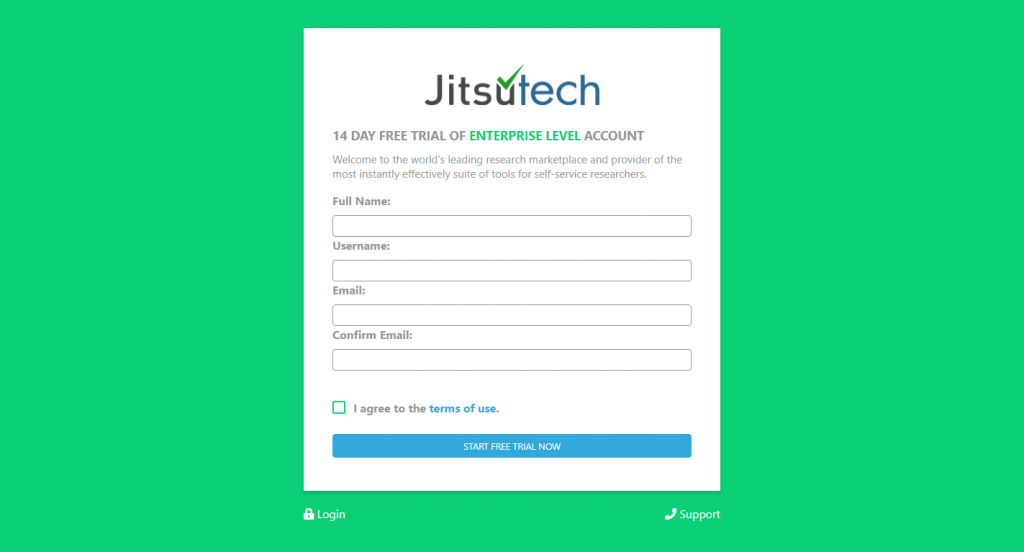Home › Jitsutech University › Monday Methodology › Seven Steps to Marketing Research
-
AuthorPosts
-
July 30, 2018 at 5:13 pm #1432
Erica
ParticipantSeven Steps to Marketing Research
From start-ups to Fortune 500 companies, Marketing can be costly and complex. The trick is to apply a system. There are copious (love that word;)) tools, steps, process’s, formulas etc. that you can use to simplify your marketing approach. In this series, we hope to provide you with weekly tools that will help you build your marketing system.
Lets start with the 7 steps to Market (sometimes referred to as Marketing) research.
Step 1: Identify/Define the problem. Some examples of problem statements might be: “Turnover is higher than ever; how do we increase employee engagement?” or “We are launching a new product, who is our target market?” or “We have monopolized our regional market, how can we take our business global?”
Please remember not to overcomplicate your problem statement. As you progress through these steps, I guarantee you will uncover answers to multiple problems you didn’t know you had.Step 2: State your research objectives. You must determine what you will be able to identify at the end of your research. Gather a team together to discuss what you need to understand to solve your problem statement. Make a list of objectives you want to achieve and prioritize them. Always make sure your objectives relate back to your problem statement. Ensure you use the SMART model when writing your objectives (Specific, Measurable, Attainable, Realistic, Time Bound).
Step 3: Specify the sampling procedure. This step can save a lot of time and money, so dedicate resources to get it right. Who, what, where, when and how you sample can be costly. The closer you are to the mark and the more specific your parameters are; the better the results. Brainstorm with your team to identify all the types of people, locations, amounts etc. you could gather samples from and prioritize your list. Start with the top priority and adjust based on results. Next, figure out how you will gather your data. If surveys are your tool of choice, then begin to write the questions you want answered and find a tool to distribute your survey efficiently and effectively. The next steps may be easier if you use a tool that gathers all your results into a secure online platform.
Step 4: Collect. Once you have clearly identified your sampling procedures, begin collecting data. Please make sure records are kept in a secure platform (use multiple if you have to) – you do not want to lose this data. Also ensure that the collection process is organized thematically so analysis is easy and when you refer back to your objectives you can find relatable data.
Step 5: Analyze. Now the fun begins! While the previous steps have been hard work, try to enjoy the analysis. Use tools and play with the data. All the data collected will result in percentages, likes, dislikes, preferences, needs, and wants. Look for patterns and natural data groupings. Organize the data around your initial research objectives. What is it telling you? Does combining multiple kinds of data reveal insights invisible before? Start to turn the data into information that propels the story you want to tell.
Step 6: Prepare and present the report. When preparing your report, make it clear, concise, compelling and most of all relate it back to the research objectives. How you present the report is critical. The order, the esthetics, the balance of qualitative and quantitative data, and your enthusiasm all matter. Be proud of what you are presenting. Whether it is good news or bad, it was hard work and will help direct the company onto a successful path. Make sure you have all your data very well organized and available at the presentation in case there are any in depth questions that arise. Be sure to communicate insights and recommendations and not just information.
Step 7: Follow-up, follow up, follow up. A critical step that sometimes slips through the cracks. How was your report received? What decisions or strategies were adopted? Is action being taken? Does the data still tell the story it did before? Follow-up is how you ensure that you are meeting your objectives. If you find yourself looping back to step one, it may be the key to maintaining the company’s forward momentum.
Try it for free for 14 days of Jitsutech Enterprise Level today!

-
AuthorPosts
- You must be logged in to reply to this topic.
